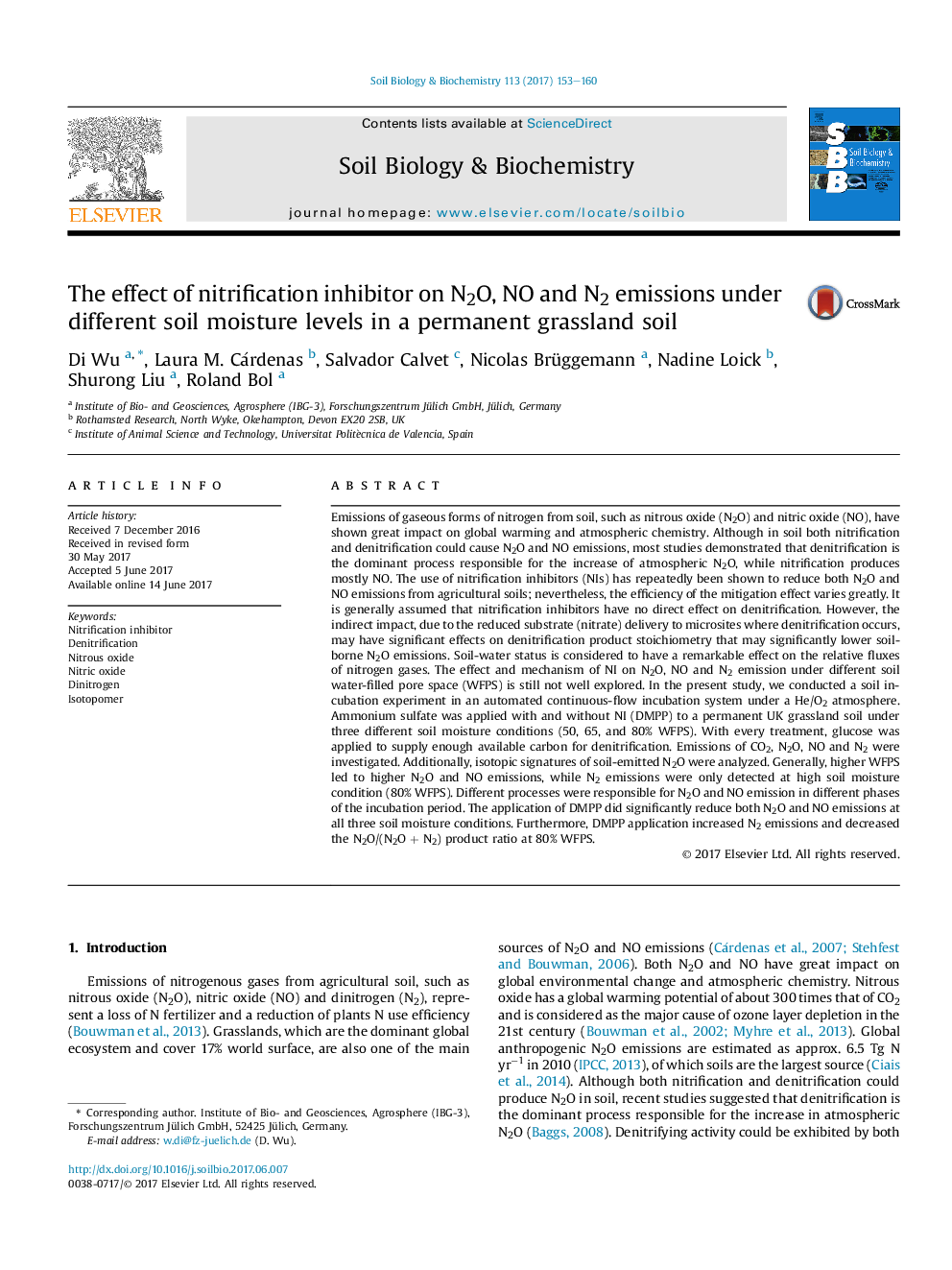| کد مقاله | کد نشریه | سال انتشار | مقاله انگلیسی | نسخه تمام متن |
|---|---|---|---|---|
| 5516377 | 1542571 | 2017 | 8 صفحه PDF | دانلود رایگان |

- Higher soil moisture is associated with higher N2O, NO and N2 emissions.
- NI mitigates N2O and NO emissions at both wet and dry soil conditions.
- NI increases N2 production and affects the product stoichiometry of denitrification.
Emissions of gaseous forms of nitrogen from soil, such as nitrous oxide (N2O) and nitric oxide (NO), have shown great impact on global warming and atmospheric chemistry. Although in soil both nitrification and denitrification could cause N2O and NO emissions, most studies demonstrated that denitrification is the dominant process responsible for the increase of atmospheric N2O, while nitrification produces mostly NO. The use of nitrification inhibitors (NIs) has repeatedly been shown to reduce both N2O and NO emissions from agricultural soils; nevertheless, the efficiency of the mitigation effect varies greatly. It is generally assumed that nitrification inhibitors have no direct effect on denitrification. However, the indirect impact, due to the reduced substrate (nitrate) delivery to microsites where denitrification occurs, may have significant effects on denitrification product stoichiometry that may significantly lower soil-borne N2O emissions. Soil-water status is considered to have a remarkable effect on the relative fluxes of nitrogen gases. The effect and mechanism of NI on N2O, NO and N2 emission under different soil water-filled pore space (WFPS) is still not well explored. In the present study, we conducted a soil incubation experiment in an automated continuous-flow incubation system under a He/O2 atmosphere. Ammonium sulfate was applied with and without NI (DMPP) to a permanent UK grassland soil under three different soil moisture conditions (50, 65, and 80% WFPS). With every treatment, glucose was applied to supply enough available carbon for denitrification. Emissions of CO2, N2O, NO and N2 were investigated. Additionally, isotopic signatures of soil-emitted N2O were analyzed. Generally, higher WFPS led to higher N2O and NO emissions, while N2 emissions were only detected at high soil moisture condition (80% WFPS). Different processes were responsible for N2O and NO emission in different phases of the incubation period. The application of DMPP did significantly reduce both N2O and NO emissions at all three soil moisture conditions. Furthermore, DMPP application increased N2 emissions and decreased the N2O/(N2OÂ +Â N2) product ratio at 80% WFPS.
Journal: Soil Biology and Biochemistry - Volume 113, October 2017, Pages 153-160